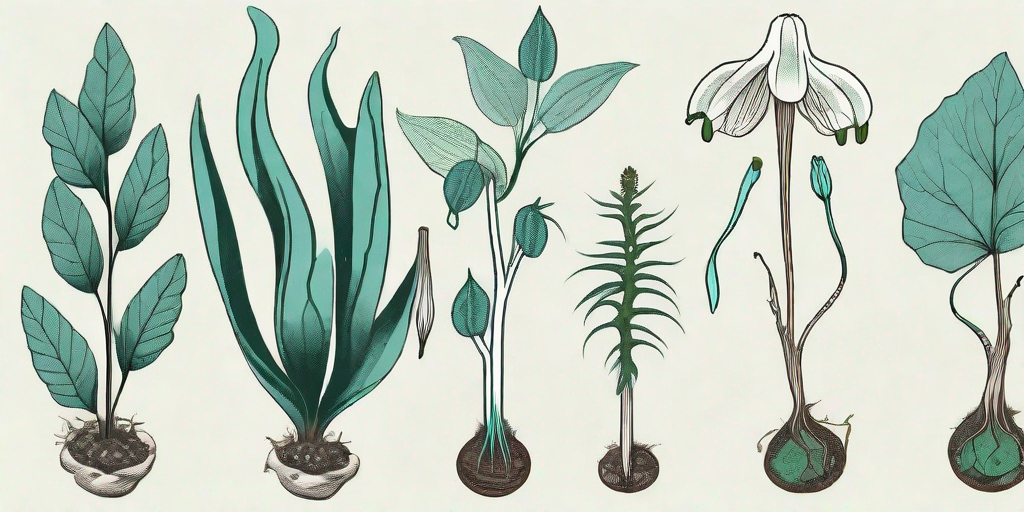
If you've ever felt like a botanical black thumb, unable to keep even the hardiest of houseplants alive, take heart. There's a whole world of plants out there that don't need your tender loving care to thrive. In fact, they don't need sunlight, soil, or even photosynthesis. Meet the saprophytic plants, the ultimate survivalists of the plant kingdom.
What are Saprophytic Plants?
Before we delve into the fascinating world of these self-sufficient plants, let's get our definitions straight. Saprophytic plants, or more accurately, mycoheterotrophic plants, are a unique group of flora that have ditched the traditional plant lifestyle. Instead of relying on photosynthesis, these plants have developed a taste for the decaying organic matter.
They've essentially become the freeloaders of the plant world, relying on fungi to do the hard work of breaking down organic material into nutrients. These plants then absorb these nutrients through their roots, bypassing the need for sunlight and photosynthesis altogether. It's a bit like deciding to live off takeout instead of cooking for yourself - cheeky, but undeniably clever.
5 Fascinating Examples of Saprophytic Plants
Now that we've covered the basics, let's dive into the weird and wonderful world of saprophytic plants. Here are five examples that demonstrate just how diverse and fascinating these plants can be.
1. Indian Pipe (Monotropa uniflora)
Also known as the ghost plant or corpse plant, the Indian Pipe is a striking example of a saprophytic plant. It's completely white, lacking the green pigment chlorophyll, which most plants use to photosynthesize. Instead, this eerie plant gets its nutrients from decaying plant matter via a fungus intermediary.
Despite its ghostly appearance, the Indian Pipe is not harmful or parasitic to other plants. It's just doing its own thing, living off the grid in the plant world. If you're lucky enough to spot one in the wild, consider it a rare treat - these plants are quite uncommon and only bloom for a short time.
2. Beechdrops (Epifagus virginiana)
Beechdrops are another fascinating example of a saprophytic plant. These unusual plants grow in the vicinity of beech trees, from which they derive their nutrients. They have a brownish-purple color and produce small, inconspicuous flowers.
While they may not win any beauty contests, Beechdrops are a testament to the adaptability of nature. They've found a way to survive in the shadow of larger plants, literally living off their leftovers. Talk about making the most of what you've got!
3. Snow Plant (Sarcodes sanguinea)
The Snow Plant is a striking saprophytic plant native to the mountains of western North America. Its bright red color makes it stand out against the snowy backdrop, hence its name. The Snow Plant relies on a specific type of fungus to break down organic material, which it then absorbs as nutrients.
These plants are a favorite among nature photographers due to their vibrant color and unusual growth habit. They're also a reminder that even in the harshest conditions, life finds a way. Or in this case, a way to mooch off others.
4. Pinesap (Monotropa hypopitys)
Pinesap is a close relative of the Indian Pipe and shares its saprophytic lifestyle. Unlike its ghostly cousin, Pinesap has a yellowish-brown color and produces clusters of bell-shaped flowers. It's found in forests across the northern hemisphere, where it quietly goes about its business of absorbing nutrients from decaying organic matter.
While Pinesap may not be as flashy as some other saprophytic plants, it's a perfect example of the saying "it's what's on the inside that counts". In this case, what's inside is a clever survival strategy that bypasses the need for sunlight and photosynthesis.
5. Dutchman's Pipe (Monotropa hypopitys)
Last but not least, we have the Dutchman's Pipe. This saprophytic plant is native to the forests of North America and Europe. It has a yellowish color and produces clusters of pipe-shaped flowers, hence its name.
The Dutchman's Pipe is a perfect example of the adaptability and resilience of nature. Despite its unconventional lifestyle, it's found a way to thrive in the shadows of larger plants. It's a reminder that there's more than one way to live a successful life - or in this case, a successful plant life.
Frequently Asked Questions
Are saprophytic plants harmful to other plants?
No, saprophytic plants are not harmful to other plants. They do not steal nutrients from living plants, but instead derive their nutrients from decaying organic matter. They are essentially recycling nutrients back into the ecosystem.
Can I grow saprophytic plants at home?
While it's technically possible to grow saprophytic plants at home, it's quite challenging. These plants have very specific growing requirements and rely on a symbiotic relationship with certain types of fungi. Unless you're an experienced botanist or horticulturist, it's probably best to admire these plants in their natural habitats.
Why are some saprophytic plants brightly colored?
Some saprophytic plants, like the Snow Plant, are brightly colored to attract pollinators. Despite their unconventional lifestyle, many saprophytic plants still reproduce via flowers and seeds, and therefore rely on pollinators to help them reproduce.
Conclusion
So there you have it, a glimpse into the fascinating world of saprophytic plants. These plants may not need our care or even our sunlight, but they certainly deserve our admiration. They've found a way to thrive in conditions that would be challenging for most other plants, proving that there's more than one way to live a successful plant life.
Next time you're feeling down about your lack of a green thumb, remember the saprophytic plants. They're a reminder that success doesn't always look like we expect it to, and that there's beauty and value in doing things your own way. After all, who needs sunlight when you can live off takeout?















